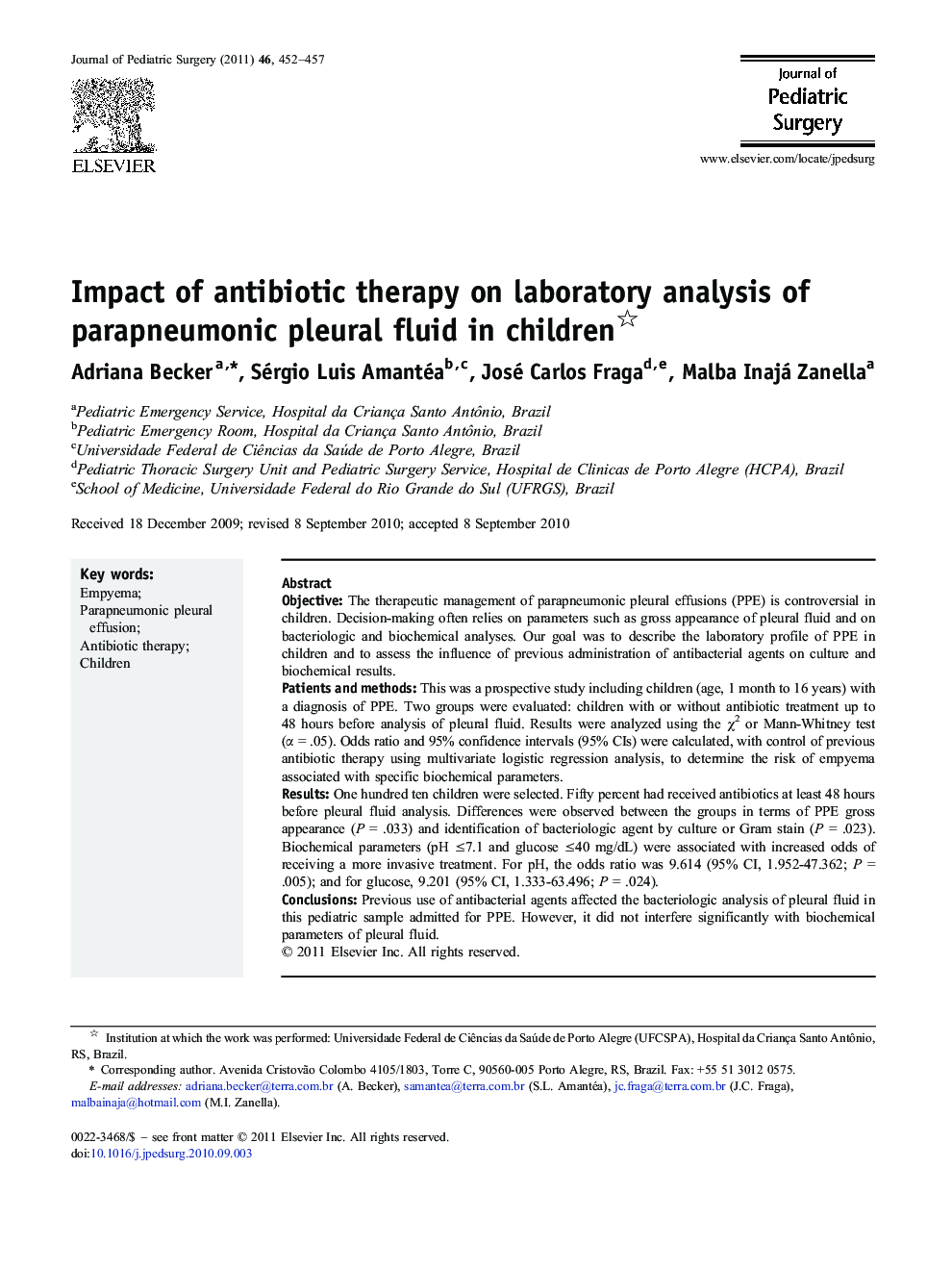| Article ID | Journal | Published Year | Pages | File Type |
|---|---|---|---|---|
| 6218038 | Journal of Pediatric Surgery | 2011 | 6 Pages |
ObjectiveThe therapeutic management of parapneumonic pleural effusions (PPE) is controversial in children. Decision-making often relies on parameters such as gross appearance of pleural fluid and on bacteriologic and biochemical analyses. Our goal was to describe the laboratory profile of PPE in children and to assess the influence of previous administration of antibacterial agents on culture and biochemical results.Patients and methodsThis was a prospective study including children (age, 1 month to 16 years) with a diagnosis of PPE. Two groups were evaluated: children with or without antibiotic treatment up to 48 hours before analysis of pleural fluid. Results were analyzed using the Ï2 or Mann-Whitney test (α = .05). Odds ratio and 95% confidence intervals (95% CIs) were calculated, with control of previous antibiotic therapy using multivariate logistic regression analysis, to determine the risk of empyema associated with specific biochemical parameters.ResultsOne hundred ten children were selected. Fifty percent had received antibiotics at least 48 hours before pleural fluid analysis. Differences were observed between the groups in terms of PPE gross appearance (P = .033) and identification of bacteriologic agent by culture or Gram stain (P = .023). Biochemical parameters (pH â¤7.1 and glucose â¤40 mg/dL) were associated with increased odds of receiving a more invasive treatment. For pH, the odds ratio was 9.614 (95% CI, 1.952-47.362; P = .005); and for glucose, 9.201 (95% CI, 1.333-63.496; P = .024).ConclusionsPrevious use of antibacterial agents affected the bacteriologic analysis of pleural fluid in this pediatric sample admitted for PPE. However, it did not interfere significantly with biochemical parameters of pleural fluid.
